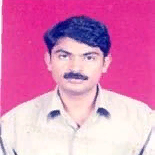
Dhirendra Pal Singh
Work place: Computer Centre, Lucknow University, Lucknow (U.P.) 226007, INDIA
E-mail: dhirendrapal@yahoo.com
Website:
Research Interests: Image Processing, Image Manipulation, Image Compression, Computational Science and Engineering
Biography
Dhirendra Pal Singh, is a computer programmer at Computer Centre, Lucknow University, Lucknow (U.P.) INDIA. He received his undergraduate Degree in Engineering in computer science and information technology B.Tech (CSIT) from I.E.T., Bareilly in 1999. He also received his Post-Graduate Degree in Computer Science. Currently he is doing his Ph.D. in Computer Science in the area of Image Processing Applications. This paper is a part of his Research Work.
Author Articles
Restoration of Degraded Gray Images Using Genetic Algorithm
By Dhirendra Pal Singh Ashish Khare
DOI: https://doi.org/10.5815/ijigsp.2016.03.04, Pub. Date: 8 Mar. 2016
This Image deblurring aims to eliminate or decrease the degradations that has been occurred while the image has been obtained. In this paper, we proposed a unified framework for restoration process by enhancement and more quantified deblurred images with the help of Genetic Algorithm. The developed method uses an iterative procedure using evolutionary criteria and produce better images with most restored frequency-content. We have compared the proposed methods with Lucy-Richardson Restoration method, method proposed by W. Dong [34] and Inverse Filter Restoration Method; and demonstrated that the proposed method is more accurate by achieving high quality visualized restored images in terms of various statistical quality measures.
[...] Read more.Text Region Extraction: A Morphological Based Image Analysis Using Genetic Algorithm
By Dhirendra Pal Singh Ashish Khare
DOI: https://doi.org/10.5815/ijigsp.2015.02.06, Pub. Date: 8 Jan. 2015
Image analysis belongs to the area of computer vision and pattern recognition. These areas are also a part of digital image processing, where researchers have a great attention in the area of content retrieval information from various types of images having complex background, low contrast background or multi-spectral background etc. These contents may be found in any form like texture data, shape, and objects. Text Region Extraction as a content from an mage is a class of problems in Digital Image Processing Applications that aims to provides necessary information which are widely used in many fields medical imaging, pattern recognition, Robotics, Artificial intelligent Transport systems etc. To extract the text data information has becomes a challenging task. Since, Text extraction are very useful for identifying and analysis the whole information about image, Therefore, In this paper, we propose a unified framework by combining morphological operations and Genetic Algorithms for extracting and analyzing the text data region which may be embedded in an image by means of variety of texts: font, size, skew angle, distortion by slant and tilt, shape of the object which texts are on, etc. We have established our proposed methods on gray level image sets and make qualitative and quantitative comparisons with other existing methods and concluded that proposed method is better than others.
[...] Read more.Evolutionary Image Enhancement Using Multi-Objective Genetic Algorithm
By Dhirendra Pal Singh Ashish Khare
DOI: https://doi.org/10.5815/ijigsp.2014.01.09, Pub. Date: 8 Nov. 2013
Image Processing is the art of examining, identifying and judging the significances of the Images. Image enhancement refers to attenuation, or sharpening, of image features such as edgels, boundaries, or contrast to make the processed image more useful for analysis. Image enhancement procedures utilize the computers to provide good and improved images for study by the human interpreters. In this paper we proposed a novel method that uses the Genetic Algorithm with Multi-objective criteria to find more enhance version of images. The proposed method has been verified with benchmark images in Image Enhancement. The simple Genetic Algorithm may not explore much enough to find out more enhanced image. In the proposed method three objectives are taken in to consideration. They are intensity, entropy and number of edgels. Proposed algorithm achieved automatic image enhancement criteria by incorporating the objectives (intensity, entropy, edges). We review some of the existing Image Enhancement technique. We also compared the results of our algorithms with another Genetic Algorithm based techniques. We expect that further improvements can be achieved by incorporating linear relationship between some other techniques.
[...] Read more.Other Articles
Subscribe to receive issue release notifications and newsletters from MECS Press journals